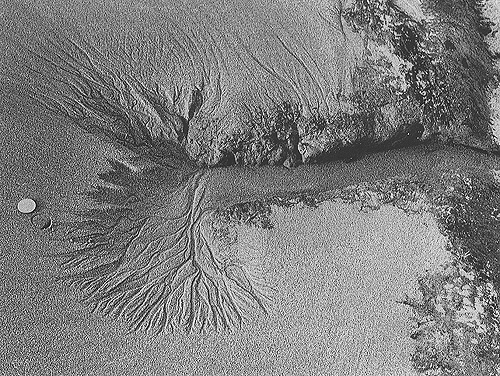
Rill marks: dendritic pattern
Plate 85

Rill marks: dendritic pattern
Plate 85
Rill marks are narrow grooves with a dendritic or anastomosing pattern, often looking like scaled models of river channels. In this case, for example, they simulate two drainage basins joining in a major channel, or, if you like, the head of a submarine canyon. The rill pattern was made by the backwash of a wave that passed over a beach berm (the sea is to the right).
Other varieties of rill marks are illustrated in color photos 19 and 25. They are produced, in general, by thin films of water flowing at moderate to low speed. It seems surprising that such weak currents have an erosional capacity, but we must remember the concept of flow regime: a reduced flow thickness compensates for velocity, and can give the current a grip on the bed. Moreover, the water is clean and consequently aggressive: it can pick up grains because its transport capacity, though small, is unsatisfied.
Rill marks and other minor erosional structures, parts of which we have already met (see plate 29, for instance), could be included in the group of modification structures.
Erosion in subaerial or very shallow water settings is a typical form of modification, and affects both tractive and exceptional deposits and structures.